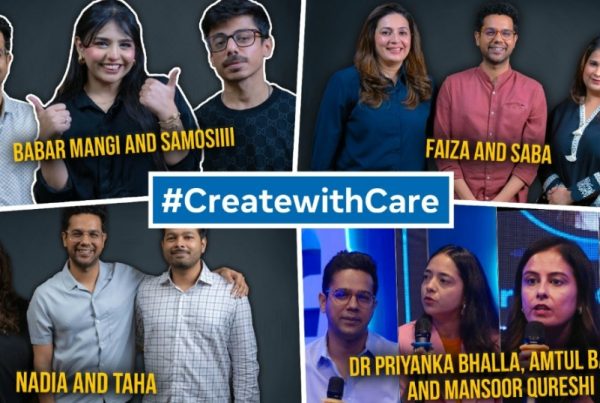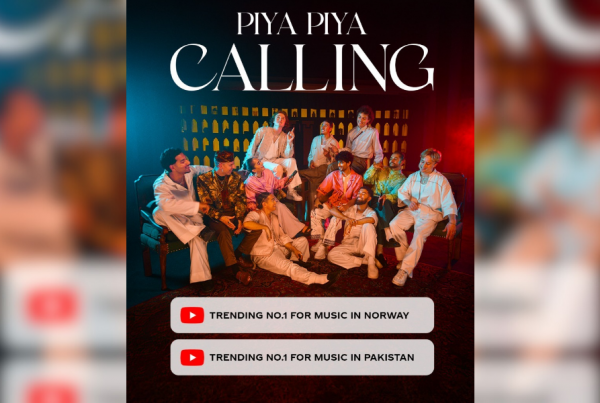(Dawn, October 31 2010)
Compact and delightfully well organized, the HDIL India Couture Week would have been the ideal model for Pakistan’s fashion weeks to begin with.
The Grand Hyatt in Santacruz Mumbai, where HDIL India Couture Week is hosted every year, started coming alive a day before the shows were to commence. Lobbies were taken over by leggy models that charmed the otherwise corporate corridors while a flurry of overanxious organizers fluttered around like busy bees. Fashionistas clicked around in ridiculously high heels (and just as high skirts) and the cafes crawled with the fast and fashionable pecking at bits of lettuce and fresh fruit. From luxury cars glistening outside (meaning that a Bollywood star had arrived) to bell-boys wheeling clothes inside (which indicated that that rehearsals were underway) the air was electric. And a retreating monsoon rain, romanticizing the otherwise hot and humid weather, lent a very filmy mood to the fashion activity. ‘When in Mumbai do as Bollywood,’ it seemed to be humming.
And ICW sure is done the Bollywood way! It’s the best possible way to sell an elite product (that is high end couture) to a middle class consumer. What better channel than films?
The energy around a fashion week, any fashion week, is always palpable but that energy intensifies when it comes with a promise of high fashion as well as the highest order of celebrity presence. To have Shahab Durazi show at a fashion week after five years was a high point for any fashion follower; to have Aishwarya Rai Bachchan on the catwalk (after 15 years) for Manish Malhotra was another. Celebrity shows of course pulled in the crowds – over a dozen stars including Amitabh Bachchan, Shah Rukh Khan, Hrithik Roshan, Kareena Kapoor on the runway – while Rohit Bal’s immaculate showing was just as well appreciated. Such a happy balance of fashion and film was an intriguing phenomenon. While the scales did tip towards celebrities, no one seemed to be complaining!
“This actually works very well for Delhi designers who have a clientele in Mumbai,†explained veteran fashion journalist Meher Castelino in the fashion week lounge. “Designers bring their latest collections here and have Bollywood stars to attract local media.â€
The HDIL India Couture Week, held annually in Mumbai (this was the third year), may not be considered one of India’s most prestigious by serious fashion followers, one discovered, but the media hype justifies and endorses its significance. The fact that couture kings like Rohit Bal and Shahab Durazi were showing lent it credibility. Karan Johar was on location everyday, covering ICW live as Kouture with Karan. Imagine the hungama that followed him every place!
This year’s lineup included the opening by Manish Malhotra, Monisha Jaising, a group Jewelry showing, Ayesha Depala, Rina Dhaka, Rohit Bal, Arjun Khanna and Shahab Durazi. Celebrity shows by Karan Johar and Varun Bahl as well as the Being Human show by Salman Khan were media fodder, even if they were low on fashion.
With just ten shows compared to 40 put up at the Wills India Fashion Week in Delhi, ICW was limited in its list of designers but extremely high powered as well as focused. On a comparative note, one felt that was exactly what either of Pakistan’s two credible fashion weeks should have aimed for. Here’s how…
Less shows, more creativity
India Couture Week put out ten shows in five days – two a day including a group showing of couture (customized) jewelry – which allowed them the space and time to take creative liberties. As opposed to eight shows happening one after the other on the same runway (as is done here), every show at ICW is unique.
Manish Malhotra had suspended giant marigold balls from the ceiling while Karan Johar constructed a street straight out of a Victorian novel. The jewelry show runway had been designed as a multi-stepped cuboid whereas Rina Dhaka’s models walked in through a very star-trekkish laser tunnel. Menswear designer Arjun Khanna rode in on a vintage bike and the most brilliant of all couturiers – Rohit Bal and Shahab Durazi – made up for the (deliberate) absence of stars by presenting equally riveting collections. Rohit Bal had inserted a pond of water in which his last batch of models waded through and Shahab Durazi, who was showing after five years, showed a collection that was simply mesmerizing. He needed neither drama nor actor.
But couture is rarely complete without melodrama and for those who so wanted it, two adjacent MSAs (Main Show Areas) made these theatrics possible as only one show was put up in each a day.
Small cast, big crew
Like any high budget production, there may have been only ten shows but the support system was massive. The event management team was supported by professional PROs, working exclusively for respective designers and celebrities. They managed the post show press conferences (thus the media) that took place after every showing. And even during the shows, there was a press kit on every single seat with goody bags containing magnifying glasses, shrilly whistles (at Salman Khan’s show which fans blew wildly when their favourite actresses sashayed in!) and even tiny fairy cakes. Speaking of cakes, food and drink was ample even in the lounge where canapés and drinks flowed freely.
Backstage, there were several stylists on the job, at least five different choreographers for different shows and an uncountable technical crew. The organization was impeccable right from the timely show schedule (beautiful cards were distributed two weeks prior to the event) up to the seating plans of the actual event (colour codes were actually implemented). The shows did start a little late each day but people were having way too much fun to be bothered by a half hour delay.
Red carpets are for celebrities only!
Unless you had an invite to the VIP lounge, you could not even step onto the red carpet. It was cordoned off by velvet ropes and only celebrities; the likes of Saif Ali Khan and Kareena Kapoor amongst other Bollywood royalty, high society (Parmeshwar Godrej), prestigious buyers from all over the world and coveted journalists as the ones from Vogue. A frantic frenzy of photographers (not on the red carpet, mind you) would indicate the arrival of a celebrity and the celebrities would pose gracefully whenever their name was called out.
Model behaviour
Manish Malhotra put a record breaking 56 models into his show. Not all of them were supermodel dimension but they passed off with height and pose. And with the exception of a few familiar faces, they were mostly young and new. Meher Rampal (formerly Meher Jessia) was actively involved in ICW but as choreographer for some of the shows, not as model. Though she looked just as good as many of the new faces, she steered clear of the catwalk gracefully.
Promoting the business model
There cannot be enough emphasis on the fact that fashion weeks are designed to promote a business model for fashion, whether it equates to direct business for the designer or employment for adjoining services. The media attention that surrounds it also serves to propel the numbers game.
“I found this to be the perfect platform for me,†Shahab Durazi spoke to Dawn Images backstage, after his show. The coveted and well-respected designer had made a comeback and he presented the much deserved grand finale of fashion week, despite the fact that he had no celebrity shenanigans on his catwalk. Arjun Rampal did put in a handsome appearance but as a model, not a star. “I had not showed for so long because there was no platform like this one, one that could do justice to couture. This was the right place and the right time.†Durazi not only showed but left picture perfect look books in his press kit, with invites to the exhibition of his fashion week collection the very next day.
Fashion week really is a very simple cycle of creating awareness around a product through extensive coverage, putting that product out for people to see, and then making sure it is accessible for those who want to buy.
Bringing the model to Pakistan
Pakistan’s fashion councils should be lauded for starting the fashion week process but it must be reiterated that a business model, not one that aims at media coverage alone, must be implemented now. With the PFDC Sunsilk Fashion Week around the corner, the council and event organizers should be ticking the following boxes:
1. Have schedules and invites gone out, especially to the media? How can there be any hype if not?
2. Have couture shows been separated from ready-to-wear shows, both of which demand a completely different class of presentation?
3. Will all shows be separated with breaks or will people have to suffer sitting through six different shows to get to the one they have come for?
4. Sabs, again? Will all fashion weeks in Pakistan continue to use one stylist as opposed to giving opportunity to many stylists at one fashion week? The same applies to choreographers, models, photographers etc. The current pool of resources is super saturated.
5. Will there be celebrities on the red carpet as opposed to corporate executives, makeup artists, fashion assistants and seedy journalists posing as celebrities? One has witnessed media excitement when Shaan, Reema, Ali Zafar or Atif Aslam make an appearance but it isn’t frequent enough, at least not in collaboration with fashion. That doesn’t justify anything though.
6. Do all participating designers have media kits for the press and will their collections be available (ever) after the shows?
7. And while we’re getting answers, can we also get an update on the Hang Ten deal announced at the previous PFDC Sunsilk Fashion Week in February? Weren’t designers going to start stocking at HT stores nationwide?
– AHI







20 Comments